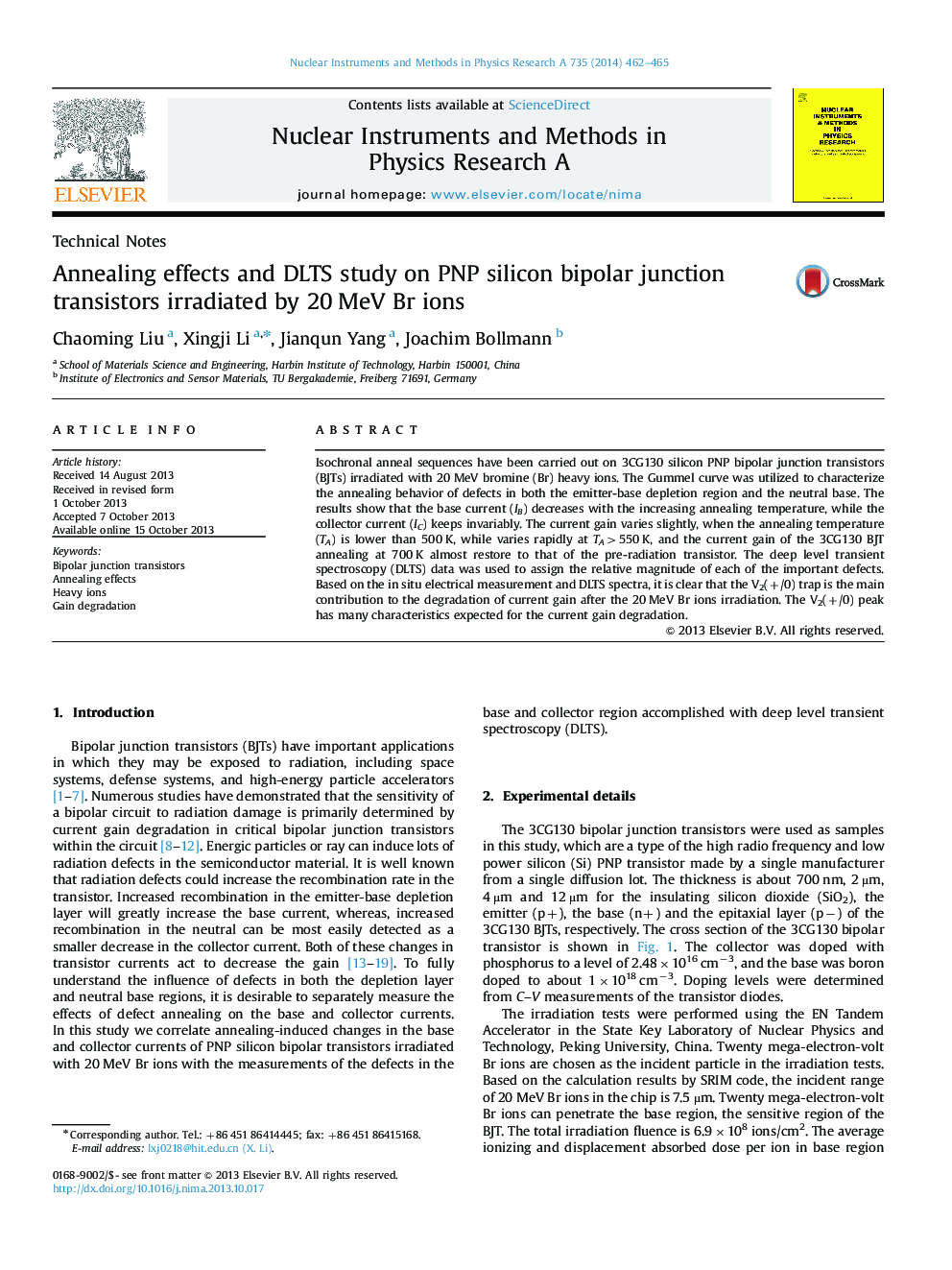| Article ID | Journal | Published Year | Pages | File Type |
|---|---|---|---|---|
| 8178452 | Nuclear Instruments and Methods in Physics Research Section A: Accelerators, Spectrometers, Detectors and Associated Equipment | 2014 | 4 Pages |
Abstract
Isochronal anneal sequences have been carried out on 3CG130 silicon PNP bipolar junction transistors (BJTs) irradiated with 20Â MeV bromine (Br) heavy ions. The Gummel curve was utilized to characterize the annealing behavior of defects in both the emitter-base depletion region and the neutral base. The results show that the base current (IB) decreases with the increasing annealing temperature, while the collector current (IC) keeps invariably. The current gain varies slightly, when the annealing temperature (TA) is lower than 500Â K, while varies rapidly at TA>550Â K, and the current gain of the 3CG130 BJT annealing at 700Â K almost restore to that of the pre-radiation transistor. The deep level transient spectroscopy (DLTS) data was used to assign the relative magnitude of each of the important defects. Based on the in situ electrical measurement and DLTS spectra, it is clear that the V2(+/0) trap is the main contribution to the degradation of current gain after the 20Â MeV Br ions irradiation. The V2(+/0) peak has many characteristics expected for the current gain degradation.
Related Topics
Physical Sciences and Engineering
Physics and Astronomy
Instrumentation
Authors
Chaoming Liu, Xingji Li, Jianqun Yang, Joachim Bollmann,
